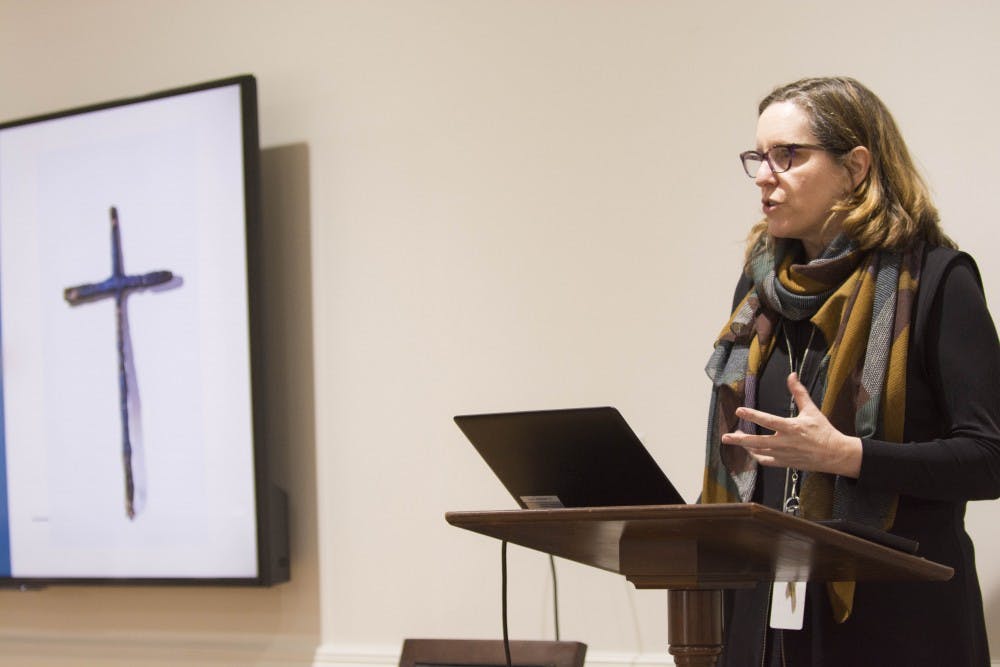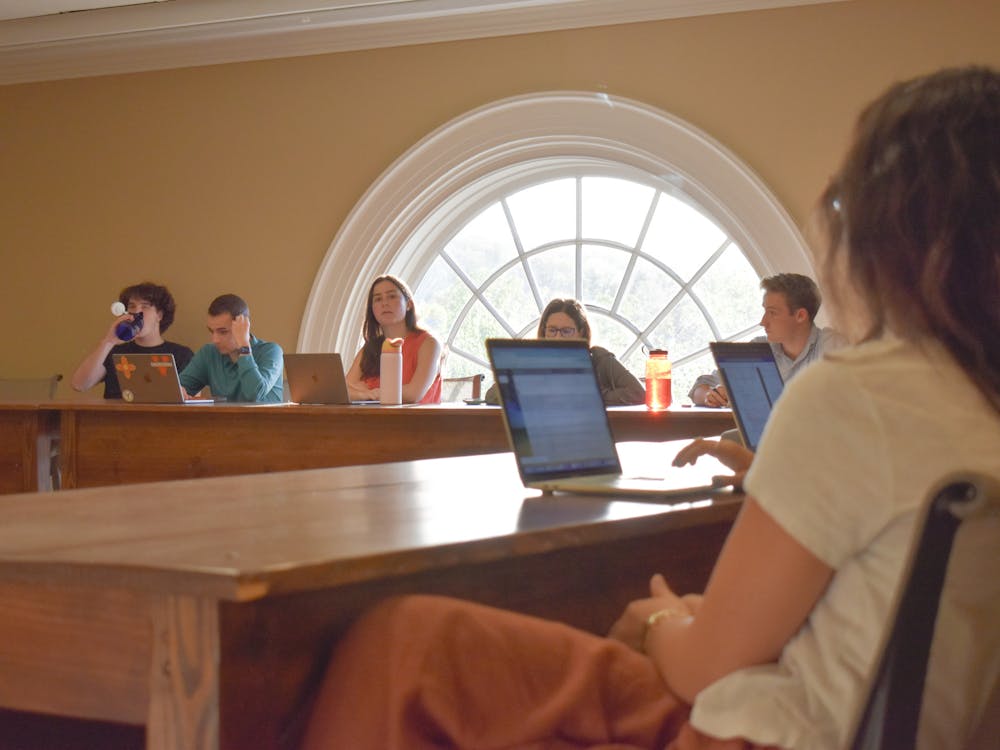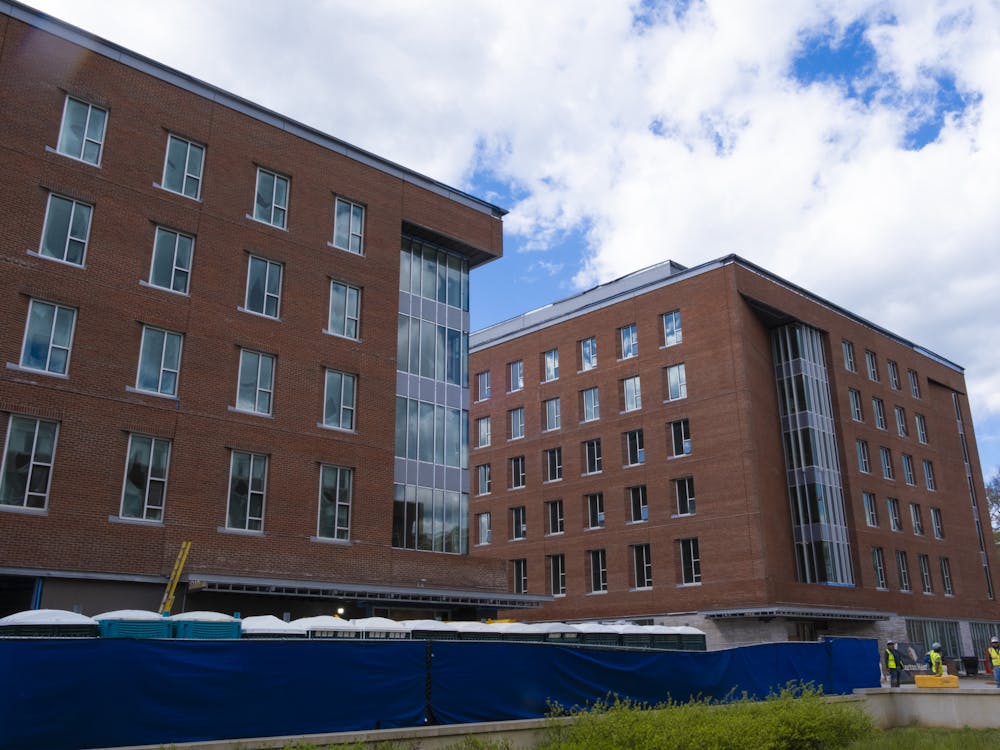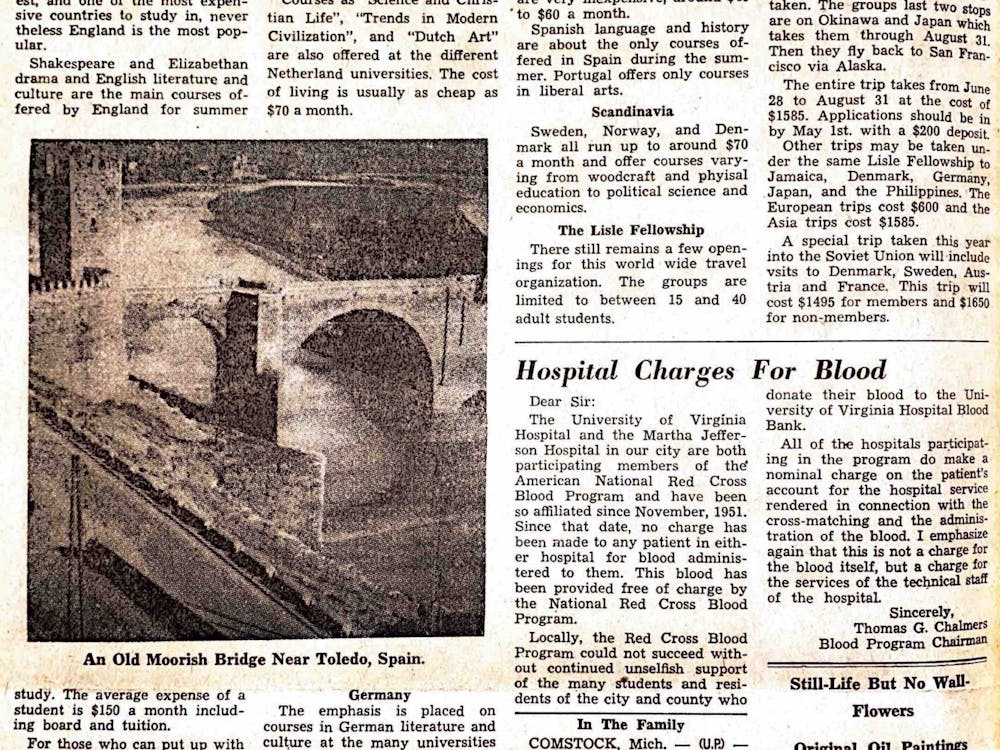Molly Schwartzburg, a curator for the Albert & Shirley Small Special Collections Library, and Michael Mason, assistant dean in the Office of African-American Affairs, delivered a talk Tuesday in the Rotunda on the exclusion and subsequent inclusion of a burned Ku Klux Klan cross in a Special Collections exhibit.
According to Schwartzburg, the cross will formally be put on display after final exams are over.
The cross was donated to the University by Sarah Patton Boyle, a civil rights activist who lobbied for desegregation. The Klu Klux Klan burned a cross in Boyle’s front yard in 1956 in response to her activism. Boyle was an Albemarle County native whose husband who taught speech and drama at the University during his lifetime.
“The University of Virginia in 100 Objects” exhibit — based on Brendan Wolfe’s book, “Mr. Jefferson’s Telescope” — displays objects from different points of the University’s history. The cross was removed from the exhibit after the events of Aug. 11 and 12 in which white nationalists held a torch-lit march through Grounds and organized the deadly Unite the Right rally in downtown Charlottesville.
According to Schwartzburg, Three of the tiki torches wielded by white nationalist demonstrators were added to the collection after Aug. 12, but they have not been on public display.
The discussion was moderated by John Unsworth, University librarian and dean of Libraries. Unsworth explained that the conversation about removing the cross from the exhibit began on Aug. 13.
“I think everybody felt in the moment that the violence that happened on August 12 had significantly recontextualized this object,” Unsworth said. “We solicited opinion from students, from faculty and from staff on campus and with the help of some others solicited the opinion from the community as well.”
According to Unsworth, the decision to remove the cross from the exhibit was not intended to be permanent. The Special Collections and library staff promised to return to the subject before the exhibition would be taken down.
“We have all kinds of things for the history of the University that people are not proud of,” Unsworth said. “We have in some of those areas opportunities to supplement with material we might collect … I do think it opens the door to building some bridges that maybe haven’t been there.”
Schwartzburg said that Wolfe’s book tells a complex history, but that the history is limited because it only represents 100 objects. In turning the book into an exhibit, Schwartzburg said that one of her main goals was to surface stories that are not a part of the traditional histories of the University that people expect to hear.
“The cross really is important in the narrative of the University that the book tells because it represents a moment in the University’s history that is kind of hard to represent through objects … the moment at which Charlottesville and the University were both struggling against integrating,” Schwartzburg said.
She mentioned that the cross and what it represents is extremely important to understanding the struggle of that era.
“This object is such a visceral example of how high the emotions were and how violent the moment was and how terrifying the moment must have been for all involved,” Schwartzburg said.
Schwartzburg said that although the Special Collections staff did not want to remove the cross at first — to maintain the integrity of Wolfe’s book — removing it served as a powerful statement in its own right.
“There was this incredible experience of taking this item out of the exhibition at the same time as we were adding evidence of what happened in Charlottesville to our collection,” Schwartzburg said. “The absence of the cross became quite a strong presence in the exhibition and I have a feeling that it not being there was in some ways more powerful than it being there because there’s a huge explanation for its absence.”
Putting the cross back in the gallery was a collective decision amongst Special Collections staff that will allow those who want the opportunity to confront this object to do so. Schwartzburg said that there is no way of predicting someone’s response to the cross, regardless of their age, race or affiliation with the University.
“Some people have said, ‘Thank you so much for removing that from the gallery,’” Schwartzburg said. “Other people have said, ‘When are you going to put it back in?’”
Mason added that it is important to prioritize the unity of the University community while challenging it at the same time.
“One thing we have to do is work on developing whatever multiple capacities we need to not split and make fragments of the University,” Mason said. “I am an agent of the University at all times ... I think that’s what helps our students develop the capacity to hold both good and bad … We are here to challenge and grow the University in whatever ways we can.”
Third-year College student Cameron Miller said that he agrees with the reinstating of the cross, but added that historical context should be provided in the form of a handout.
“If they are handed a pamphlet with all the required context when they go in the door nobody can claim ignorance,” Miller said. “There is a historical meaning behind it and it is meant to represent the progress of the University towards desegregation ... I think it [the cross] is very much a lesson of the past.”
The cross will remain on display in the exhibit at the Special Collections Library through June 22.
Correction: This article previously stated that tiki torches wielded by white nationalist demonstrators Aug. 11 were publicly displayed as part of the Special Collections exhibit. While three of the torches have been added to the collection, they are not currently on public display.





